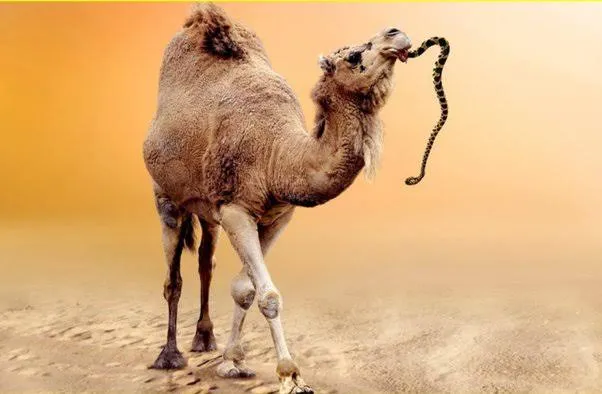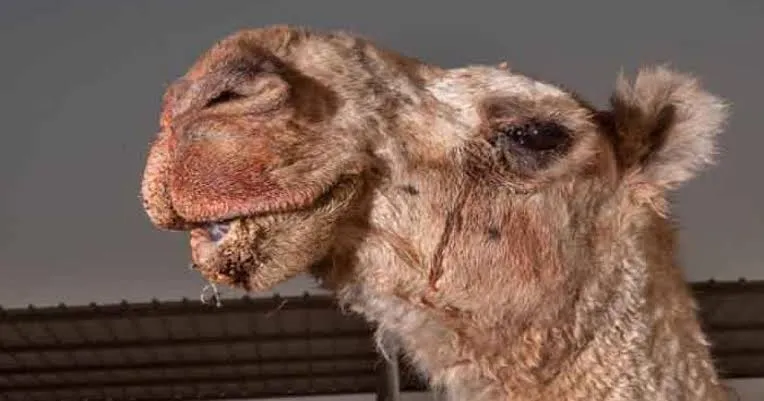
Bismillahir Rahmanir Rahim.
Assalamu Alaikum Wa Rahmatullahi Wabarkatuhu.
I hope you are all well I am also very well with your prayers by the grace of Allah I am healthy today I have some of our rare diseases. Welcome to this post and congratulations to all of you.
Discuss different types of camel diseases causes symptoms remedies and preventive measures etc.
Camels, often referred to as "ships of the desert," are resilient animals adapted to harsh environments. Despite their hardiness, camels are susceptible to various diseases that can affect their health, productivity, and lifespan. Understanding the types of camel diseases, their causes, symptoms, remedies, and preventive measures is crucial for effective camel husbandry.
- Camel Pox
Causes and Transmission:
Camel pox is a viral disease caused by the Camelpox virus, a member of the Orthopoxvirus genus. It spreads through direct contact with infected animals, contaminated equipment, or through insect vectors like flies.
Symptoms:
Fever
Nodules and pustules on the skin, particularly around the mouth, nostrils, and eyes
Swelling of the lymph nodes
Loss of appetite and general malaise
Remedies:
Supportive care: Ensure the camel remains hydrated and well-nourished.
Antibiotics: To prevent secondary bacterial infections.
Topical antiseptics: For treating skin lesions.
Preventive Measures:

source
Vaccination: Effective vaccines are available and should be administered in endemic areas.
Quarantine: Isolate infected animals to prevent the spread of the virus.
Hygiene: Maintain cleanliness in housing and equipment.
- Trypanosomiasis (Surra)
Causes and Transmission:
Trypanosomiasis, also known as Surra, is caused by the protozoan parasite Trypanosoma evansi. It is transmitted by biting flies, particularly Tabanids and Stomoxys.
Symptoms:
Intermittent fever
Progressive weight loss
Anemia
Edema, particularly in the lower body
Nervous signs such as incoordination in advanced stages
Remedies:

source
Antiprotozoal drugs: Suramin, diminazene aceturate, and quinapyramine are commonly used.
Supportive care: Ensure proper nutrition and hydration.
Preventive Measures:
Vector control: Use insecticides and fly repellents.
Prophylactic treatments: Regular use of antiprotozoal drugs in high-risk areas.
Avoiding grazing in fly-infested areas during peak fly activity times.
- Gastrointestinal Parasites
Causes and Transmission:
Camels can be infected by various gastrointestinal parasites, including nematodes, cestodes, and protozoa. These parasites are usually ingested through contaminated feed or water.

source
Symptoms:
Diarrhea
Weight loss
Poor coat condition
Anemia
Abdominal pain
Remedies:
Anthelmintics: Use broad-spectrum dewormers like ivermectin, fenbendazole, and albendazole.
Probiotics: To restore gut flora.
Preventive Measures:
Regular deworming schedules
Pasture management: Rotational grazing to reduce parasite load.
Clean water and feed: Ensure feed and water sources are not contaminated.
- Mastitis
Causes and Transmission:
Mastitis in camels is an infection of the mammary gland, primarily caused by bacterial pathogens like Staphylococcus aureus and Streptococcus agalactiae. Poor milking hygiene and injuries to the udder are common predisposing factors.

source
Symptoms:
Swelling, redness, and heat in the udder
Pain upon palpation
Abnormal milk secretion: Presence of clots or blood
Decreased milk production
Remedies:
Antibiotic therapy: Based on culture and sensitivity tests.
Anti-inflammatory drugs: To reduce pain and swelling.
Proper milking techniques: Ensuring gentle and complete milking to prevent injury.
Preventive Measures:
Milking hygiene: Clean the udder before and after milking.
Regular inspection: Early detection and treatment of mastitis.
Proper housing: Ensure clean and dry bedding to reduce bacterial load.
- Respiratory Infections
Causes and Transmission:
Respiratory infections in camels can be caused by a variety of pathogens, including bacteria (e.g., Pasteurella multocida), viruses (e.g., Adenovirus), and fungi. Stress, poor ventilation, and overcrowding are significant risk factors.
Symptoms:
Nasal discharge
Coughing and sneezing
Fever
Difficulty breathing
Lethargy
Remedies:
Antibiotics: For bacterial infections.
Antivirals and antifungals: Depending on the causative agent.
Supportive care: Ensure adequate hydration and rest.
Preventive Measures:
Good ventilation: Ensure proper airflow in housing facilities.
Quarantine: Isolate new or sick animals to prevent the spread of infection.
Vaccination: Where applicable, vaccinate against known respiratory pathogens.
- Foot and Mouth Disease (FMD)
Causes and Transmission:
FMD is a highly contagious viral disease caused by the Foot-and-Mouth Disease virus (FMDV). It spreads through direct contact with infected animals, contaminated feed, equipment, and even through the air over short distances.
Symptoms:
Fever
Vesicles and ulcers in the mouth, on the tongue, and around the hooves
Excessive salivation
Lameness
Decreased milk production
Remedies:
No specific antiviral treatment: Supportive care to maintain hydration and nutrition.
Pain relief: Analgesics to alleviate discomfort.
Preventive Measures:
Vaccination: Regular vaccination programs in endemic areas.
Biosecurity: Strict biosecurity measures to prevent the introduction and spread of the virus.
Quarantine: Isolate affected animals.
- Mange
Causes and Transmission:
Mange is a skin condition caused by parasitic mites, primarily Sarcoptes scabiei and Psoroptes spp. It is highly contagious and spreads through direct contact or contaminated bedding and equipment.
Symptoms:
Severe itching
Hair loss
Thickened, crusty skin
Secondary infections due to scratching
Remedies:
Topical acaricides: Such as ivermectin and permethrin.
Systemic treatments: Injectable ivermectin or doramectin.
Antibiotics: For secondary bacterial infections.
Preventive Measures:
Regular grooming: To monitor and manage early signs of infestation.
Quarantine: Isolate and treat new or infested animals.
Clean environment: Regularly clean and disinfect bedding and equipment.

source
Effective camel husbandry requires a comprehensive understanding of the diseases that can affect these animals. Early diagnosis, appropriate treatment, and preventive measures are crucial in maintaining the health and productivity of camels. By implementing good management practices, including regular health checks, vaccinations, and maintaining a clean environment, camel owners can significantly reduce the incidence of diseases and enhance the well-being of their herds.
